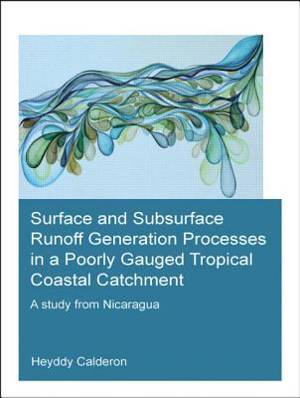
- Afhalen na 1 uur in een winkel met voorraad
- Gratis thuislevering in België vanaf € 30
- Ruim aanbod met 7 miljoen producten
- Afhalen na 1 uur in een winkel met voorraad
- Gratis thuislevering in België vanaf € 30
- Ruim aanbod met 7 miljoen producten
Zoeken
Surface and Subsurface Runoff Generation Processes in a Poorly Gauged Tropical Coastal Catchment
A Study from Nicaragua
Heyddy Calderon Palma
€ 58,45
+ 116 punten
Uitvoering
Omschrijving
Hydrological research in humid tropics is particularly challenging because of highly variable hydrological conditions and high socio-economic stresses caused by rapid population increase, as is the case of Nicaragua. The objective of this research is to understand the surface and subsurface runoff generation processes in a poorly gauged coastal catchment in Nicaragua under variable humid tropical conditions. Specifically, it focuses on identifying geomorphological and hydro-climatic controls on catchment response at different spatio-temporal scales and studies the link between hydrological processes and ecosystem conditions (i.e. mangrove forest). Catchment topography, geology and land use control surface and subsurface runoff generation. Spatio-temporal variability of precipitation affects availability of water resources, determines sources of surface runoff generation and induces changes in groundwater-surface interactions. Sustainable water resources management must prevent drastic alterations in catchment structural characteristics defined by forested areas and tidal sand ridges. Catchment response to hydro-climatic and geomorphologic controls supports the mangrove ecosystem freshwater needs. The outcome of this work is a contribution to the hydrological knowledge of poorly gauged catchment in humid tropics. It also provides scientific hydrological insights to support water resources management on the South Pacific coast of Nicaragua.
Specificaties
Betrokkenen
- Auteur(s):
- Uitgeverij:
Inhoud
- Aantal bladzijden:
- 128
- Taal:
- Engels
- Reeks:
Eigenschappen
- Productcode (EAN):
- 9781138027589
- Verschijningsdatum:
- 31/03/2015
- Uitvoering:
- Paperback
- Formaat:
- Trade paperback (VS)
- Afmetingen:
- 168 mm x 239 mm
- Gewicht:
- 258 g

Alleen bij Standaard Boekhandel
+ 116 punten op je klantenkaart van Standaard Boekhandel
Beoordelingen
We publiceren alleen reviews die voldoen aan de voorwaarden voor reviews. Bekijk onze voorwaarden voor reviews.











